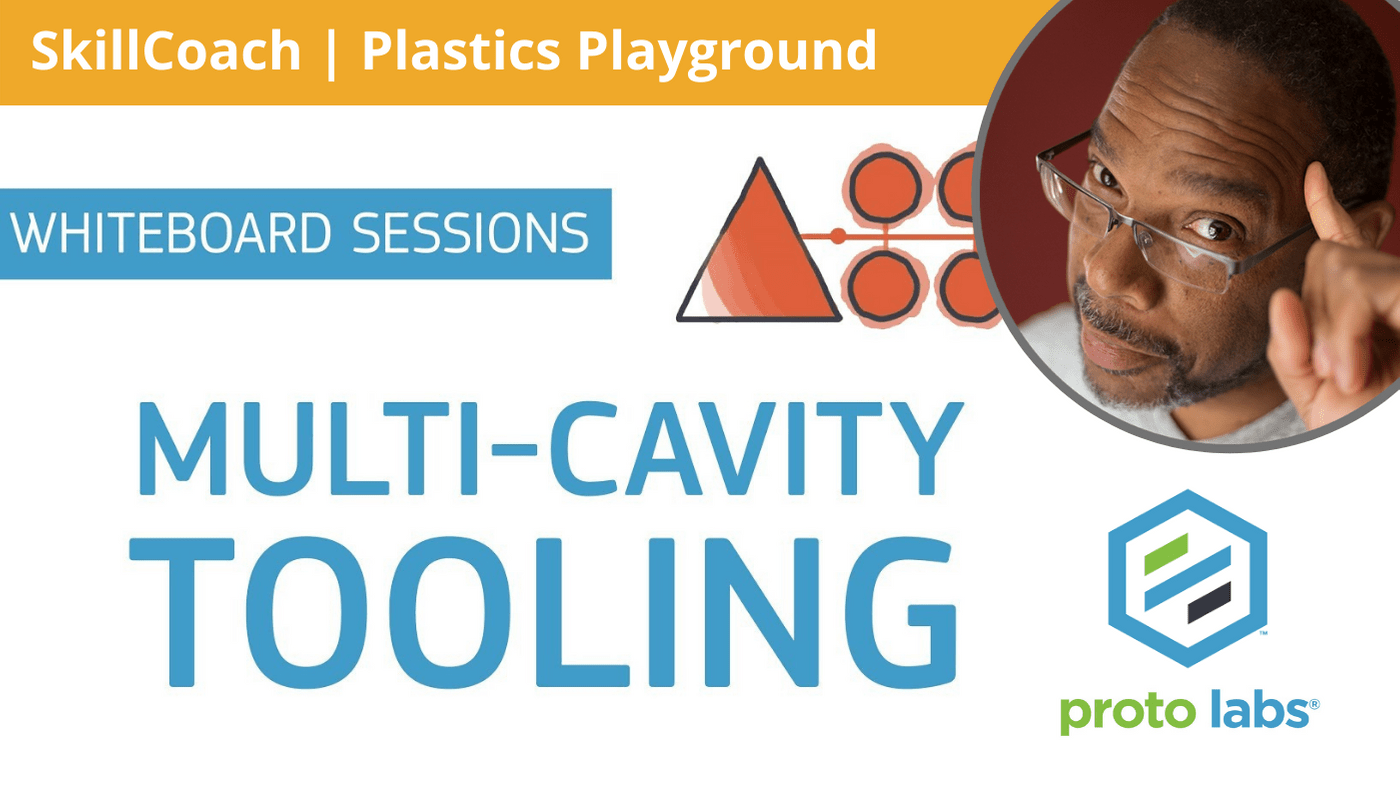Multi-cavity tooling is the topic we’ll be exploring in today’s SkillCoach Plastics Playground. Now I’m not referring to picks, scrapers, or the high-pitched rotary tools used to make quick work of a menacing cavity wreaking havoc on your molar. Rather, I’m speaking of an injection-mold tooling configuration.
Multi-cavity tooling helps optimize the production of plastic parts. Instead of an injection press spitting out only one plastic part per cycle, multi-cavity tooling enables the injection press to pump out oodles of parts in a given cycle! The net result, more parts in less time. As they say, “time is money!” So, if you’re needing to find a way to shave a few pennies off your piece-part costs, multi-cavity may just be the ticket. Intrigued? Then read on.
To help us along the path of learning lets turn to Protolabs a rapid prototyping service headquartered in Maple Plain MN. If you’ve not heard of Protolabs do check them out. Without a doubt, you will be privy to a smorgasbord of rapid prototyping goodness! From their design guides and aids to the Cool Awards program, opportunities abound for learning and procuring services to help bring your novel product ideas to life.
I recently discovered the Protolab Whiteboard Session video series which is a collection of informative videos covering various facets of plastic part design and manufacturing consideration. Let’s see what nuggets we can glean regarding the world of multi-cavity tooling!
SkillCoach Video Takeaways
Having absorbed the video I’ve outlined some of my key takeaways. Perhaps some additional things will capture your attention.
Firstly, multi-cavity tooling simply means a tool that has multiple voids aka, “cavities” machined out in order to make plastic part production more efficient or cost-effective. Having said this, one may be tempted to think the more cavities the merrier. But unfortunately, it does not quite work that way. In the Multi-Cavity White-Board video, ProtoLabs application engineer in cliff-notes fashion points out an array of considerations you’ll want to take into account. He offers up just the right amount of guidance on the topic to put us all on the right path. If you desire more in-depth information specific to multi-cavity have a look here or seek out a living breathing expert. Below is a graph that highlights the pros associated with a multi-cavity tooling approach.

Multi-Cavity Configuration Options
There are two primary approaches or configurations to multi-cavity tooling 1) Family (a group of unique parts) and 2) Common Cavity (multi-cavities of the same geometric part). There are pros and cons to each configuration so you’ll want to be sure to do your homework in order to best understand the tradeoffs.
Common Cavity
Let’s have a look at a common cavity tooling scenario. Say you have a sweet new multi-piece thingy-ma-jobber product you are gearing up to sell. Its got a front, back, and a top. Your aim is to build a marketing strategy around Color Material & Finish (CMF) such that you can provide the consumer with numerous color options. In this instance, you may want to go with three separate injection tools. Each tool would be configured with an array of cavities of the same part as depicted in the graphic below. The advantage here is the flexibility to mix and match colors. Having said this though, keeping up with inventory for each color could be the tricky part.

Family Cavity
Let’s have a look at a family tooling scenario. This time lets say you are extremely tight on cash. So figuring a way to minimize your tooling investment is a high priority. Also, you want to ensure you get a complete product with every cycle of the injection press. Then family cavitation most likely will be the ticket.
Family tools consist of a cavitational layout that accounts for the parts required to produce a whole product. In the video, Chris the applications engineer uses the example of a two-piece handle consisting of left and right halves. Let’s build on that. If we through in a trigger and gimble cover we’ve got ourselves a joystick product. Together this array of pieces make up the entire product. Pretty sweet huh? But what might a downside or limitation be to such a configuration?

In our example, each piece differs in size and shape. This produces a different set of inject-molding challenges in order to produce a geometrically stable and high-quality aesthetic part. Chris spoke about the importance of part arrangement to best control balancing mold fill rates. The .GIF image below demonstrates the mold fill issue that must be overcome. Take note of the resulting issues associated with grouping very dissimilar size and shape parts in the same tool. Flashing (that is the leaking of material out of a given cavity), short-shots (cavities that do not get filled), and over-packing (cavities that have too much material force in). The good news is, managing these molding conditions is something that is done every day. So keep your chin up!

There you have it! A quick primer on multi-cavity tooling. I’ve personally gone through this process many times in my product development journey. Each time I learn something new. A piece of advice from SkillCoach, especially if you are responsible for each stage from art-to-part, COLLABORATE! Identify a tooler early. Inquire as to what services they offer. Share your preliminary CAD such that you can work together to hammer out molding issues and requirements that may affect the final aesthetics of your product. Enjoy the journey!
Until next time, Keep Learning!







